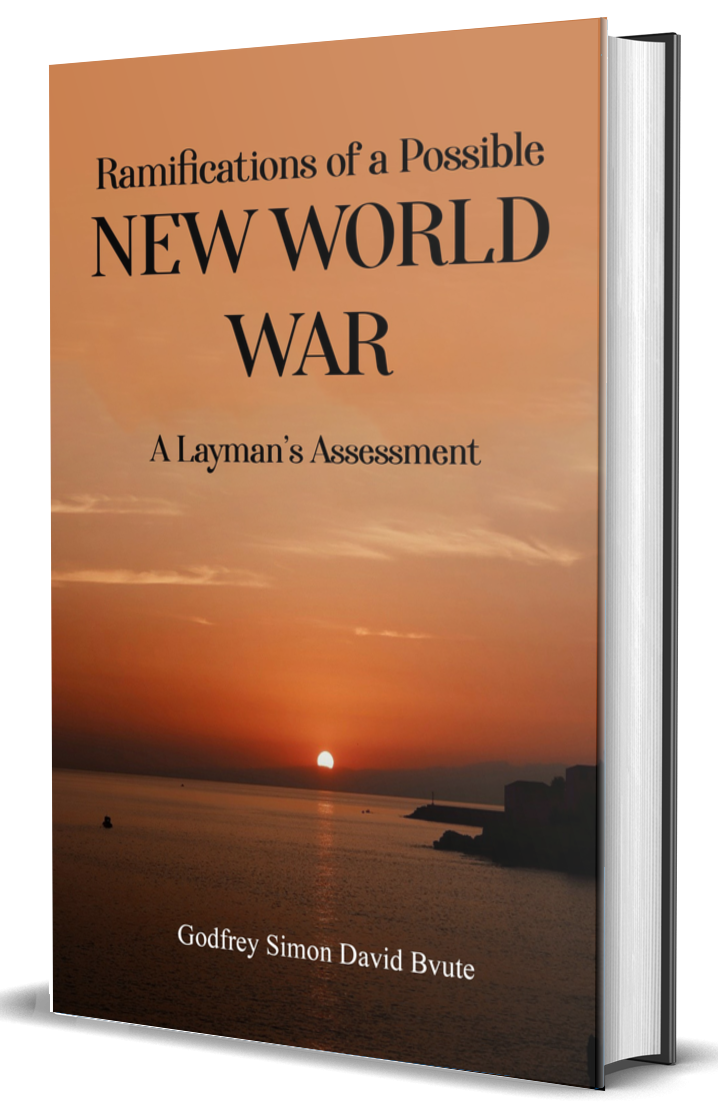Believe it or not, the threat of nuclear war has plagued humanity for centuries. While the Cold War era saw an uneasy peace maintained by the principle of mutually assured destruction (MAD), today’s geopolitical landscape presents greater and more dangerous risks. In light of this, Godfrey Simon David Bvute’s “Ramifications of a Possible New World War: A Layman’s Assessment” offers a radical and attentive view. The book warns that a nuclear conflict would only devastate the direct participants and would have catastrophic global consequencesmore severe than what we’ve ever witnessed.

For example, a full-scale nuclear war could wipe out over 70% of the global population. This includes millions of innocent people in Africa and other parts of the Global South. Unlike conventional wars, which often have clear winners and losers, a nuclear confrontation with advanced nuclear weapons, including intercontinental ballistic missiles (ICBMs) and hypersonic warheads, would result in mutual annihilation and massive destruction, making strategic defense nearly impossible.
Even a limited nuclear exchange would lead to severe environmental and humanitarian consequences as nuclear explosions would release massive amounts of radiation, causing long-term genetic mutations and increased cancer rates. This could also result in a “nuclear winter” where soot and debris block sunlight, leading to global cooling, which would disrupt agriculture, leading to mass starvation.
Bvute describes how current conflicts, such as the wars in Ukraine, heighten the risk of nuclear escalation. As Western nations supply advanced weaponry to Ukraine, Russia views this as an existential threat. A single miscalculation, whether a targeted strike on a NATO country or a retaliatory attack, could quickly spiral into a global nuclear war.
Moreover, the involvement of other nuclear-armed nations, including China, India, and Pakistan, could add further unpredictability, as if one nuclear power launches an attack, others may feel compelled to respond, leading to a chain reaction of destruction.
Historically, arms control agreements like the Strategic Arms Reduction Treaty (START) and the Intermediate-Range Nuclear Forces (INF) Treaty played a vital role in limiting nuclear proliferation. However, in recent years, key agreements have been abandoned or weakened, increasing the risk of unchecked nuclear expansion.
To prevent this mass destruction, Bvute’s book calls on nations to renew their commitments to disarmament and diplomatic engagement. Or else? The world will inch closer to nuclear catastrophe as the withdrawal from arms control treaties, combined with the modernization of nuclear arsenals, sets a dangerous precedent for the future.
Despite the grim outlook, “Ramifications of a Possible New World War: A Layman’s Assessment” insists that nuclear war is not inevitable. Through diplomacy and collective action, the world can avert disaster, and world leaders can:
- Recommit to arms control agreements and non-proliferation treaties.
- Establish direct communication channels to prevent misunderstandings that could lead to conflict.
- Promote de-escalation strategies through global institutions such as the UN.
- Encourage public discourse on nuclear threats to increase awareness and advocacy for peace.
Bvute concludes with a plea to those in positions of power: war is never worth the cost. Instead of preparing for destruction, he underscores that nations must invest in the next generation, ensuring that children and young people can thrive in a peaceful world. The greatest threat to human civilization is not just the existence of nuclear weapons but the willingness of leaders to use them for their own good and power.
By understanding the risks, promoting dialogue, and rejecting war as a means of conflict resolution, we can work towards a future where peace prevails over destruction. The message of Ramifications of a Possible New World War is clear: nuclear war must be prevented at all costs for a better and more peaceful world.
“Ramifications of a Possible New World War: A Layman’s Assessment” by Godfrey Simon David Bvute explores a timely and accessible analysis of escalating global tensions, particularly in light of the conflict in Ukraine. This book discusses the historical context of East-West conflicts, the economic and military ramifications of war, and the ever-present threat of nuclear catastrophe. Through detailed insight, research, and historical examples, Bvute explores the complex interplay of political ideologies, economic motivations, and military strategies that contribute to global instability and increasing tension.